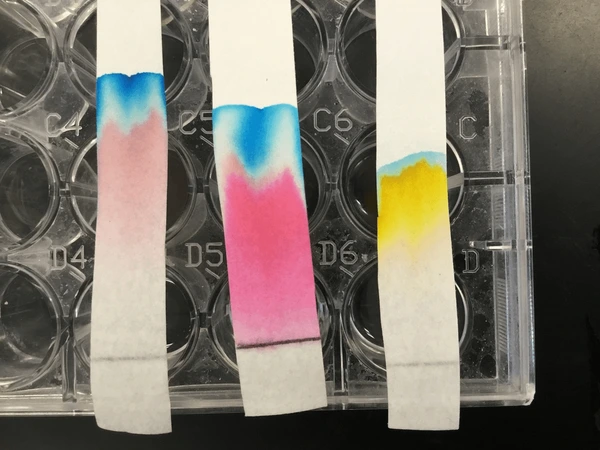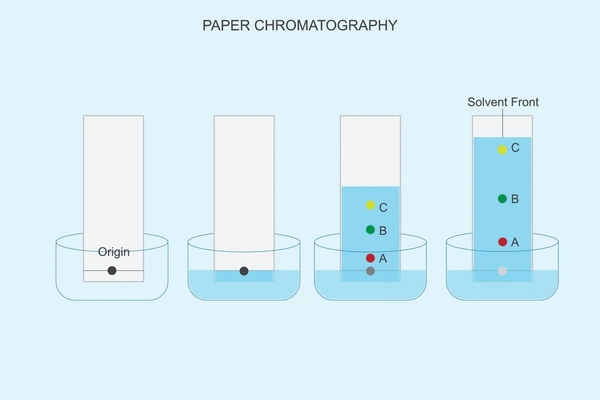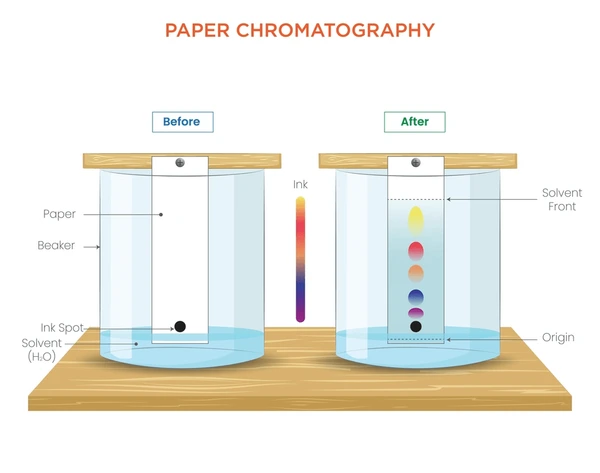Chromatography is one of the most powerful techniques in analytical chemistry, used extensively for separating and identifying components of a mixture. Whether applied in laboratory research, forensic analysis, pharmaceutical development, or food testing, chromatography has become a cornerstone experiment in scientific investigations. In this comprehensive guide, we present a detailed overview of how to perform a chromatography experiment, understand its principles, and interpret the results accurately.
Introduction to Chromatography
Chromatography is a method for separating the individual components of a mixture based on their different affinities towards a stationary phase and a mobile phase. These components travel at varying speeds, causing them to separate over time.
Types of Chromatography Techniques
There are various forms of chromatography used across different industries and scientific disciplines:
1. Paper Chromatography
Used for separating and identifying mixtures of soluble substances, especially in educational laboratories. It’s simple and cost-effective.
2. Thin Layer Chromatography (TLC)
Thin-layer chromatography (TLC) utilizes a thin coating of adsorbent material, typically silica gel, spread over a glass, metal, or plastic plate. It offers greater precision compared to paper chromatography.
3. Column Chromatography
This technique uses a glass column packed with a stationary phase, while the mobile phase flows through it. It is commonly used in laboratories to purify compounds.
4. Gas Chromatography (GC)
Used for volatile compounds. It involves a gaseous mobile phase and is employed in forensic science and drug analysis.
5. High-Performance Liquid Chromatography (HPLC)
An advanced form of column chromatography that uses high pressure to push solvents through columns. Widely used in pharmaceutical quality control.
Principle of Chromatography

The principle relies on differential partitioning between the mobile and stationary phases. Components that interact more strongly with the stationary phase move more slowly, while those that prefer the mobile phase move faster, resulting in separation.
Materials Required for Paper Chromatography Experiment
To carry out a basic chromatography experiment, especially in academic settings, the following materials are needed:
- Filter paper or chromatography paper
- Beaker or glass jar
- Pencil (not pen)
- Ruler
- Capillary tubes or droppers
- Solvent (e.g., water, ethanol)
- Sample mixtures (e.g., food dyes, plant pigments)
- A glass rod or stick to suspend the paper
Procedure for Chromatography Experiment
Step 1: Preparation of Chromatography Paper
Take a strip of chromatography paper and draw a straight line using a pencil about 2 cm from the bottom. This is your baseline.
Step 2: Application of Samples
Use a capillary tube to place a small drop of the sample mixture on the baseline. Let it dry and repeat to make the spot more concentrated.
Step 3: Setting Up the Solvent
Pour a small amount of solvent into the beaker – just enough to touch the bottom edge of the paper when it is placed inside.
Step 4: Developing the Chromatogram
Suspend the paper inside the beaker using a glass rod, ensuring the sample spots are above the solvent level. Close the beaker with a lid or foil to prevent evaporation.
Step 5: Waiting Period
Leave the setup undisturbed. The solvent will travel up the paper, carrying the sample components at different rates.
Step 6: Removing and Drying
When the solvent front approaches the top of the paper, take the paper out, use a pencil to mark the position of the solvent front, and let the paper dry.
How to Calculate Rf Values

Each spot on the chromatogram corresponds to a compound in the mixture. To identify them, we calculate the Rf (Retention factor) using:
Rf = Distance moved by solute ÷ Distance moved by solvent
This ratio is always less than 1 and specific to each compound under set conditions.
Interpreting the Results
Color and Position
Different substances show up as distinct spots. The color, height, and Rf value help in identifying components by comparing them with known standards.
Number of Spots
Multiple spots indicate a mixture, while a single spot typically suggests a pure compound.
Applications of Chromatography Experiment
Chromatography is not limited to laboratories. Here are some key areas where this technique is critical:
- Forensic science: Analyzing blood samples and toxins
- Environmental testing: Detecting pollutants in water and soil
- Pharmaceuticals: Drug purity and composition analysis
- Food industry: Identifying food additives and contaminants
- Clinical diagnosis: Detecting metabolic disorders and illegal substances
Troubleshooting Common Errors
Spots Smearing or Running Together
- Use smaller amounts of sample
- Ensure proper drying between applications
No Separation Observed
- Change the solvent
- Try a longer chromatography paper for better development
Uneven Solvent Front
- Avoid tilting the beaker
- Use a uniform strip of chromatography paper
Tips to Improve Chromatography Experiment Results
- Always use a pencil, as ink may run with the solvent
- Keep the experiment in a draft-free, level space
- Pre-test solvents for optimal separation
- Label your chromatograms clearly for future reference
Safety Precautions for Chromatography Experiment
- Use gloves and goggles while handling solvents
- Work in a well-ventilated area
- Dispose of chemical waste according to regulations
- Never inhale fumes directly from solvents
Advanced Variations and Enhancements
For those looking to expand the experiment:
- Use UV lamps to detect colorless compounds
- Try two-dimensional chromatography for complex mixtures
- Combine with spectroscopy for detailed analysis
Conclusion
Chromatography Experiment is a versatile and vital technique in modern science. Whether you’re a student exploring chemical separation or a researcher working with complex mixtures, mastering this experiment opens a wide array of analytical possibilities. Understanding how it works, following precise procedures, and knowing how to troubleshoot results ensures accuracy and reliability every time.
What Is Chromatography?
Chromatography experiment is a method for separating the individual components of a mixture based on their different affinities towards a stationary phase and a mobile phase. These components travel at varying speeds, causing them to separate over time.
Types of Chromatography Techniques
There are various forms of chromatography used across different industries and scientific disciplines:
1. Paper Chromatography
Used for separating and identifying mixtures of soluble substances, especially in educational laboratories. It’s simple and cost-effective.
2. Thin Layer Chromatography (TLC)
Thin-layer chromatography (TLC) utilizes a thin coating of adsorbent material, typically silica gel, spread over a glass, metal, or plastic plate. It offers greater precision compared to paper chromatography.
3. Column Chromatography Experiment
This technique uses a glass column packed with a stationary phase, while the mobile phase flows through it. It is commonly used in laboratories to purify compounds.
4. Gas Chromatography (GC)
Used for volatile compounds. It involves a gaseous mobile phase and is employed in forensic science and drug analysis.
5. High-Performance Liquid Chromatography (HPLC)
An advanced form of column chromatography that uses high pressure to push solvents through columns. Widely used in pharmaceutical quality control.
Principle of Chromatography Experiment

The principle relies on differential partitioning between the mobile and stationary phases. Components that interact more strongly with the stationary phase move more slowly, while those that prefer the mobile phase move faster, resulting in separation.
Materials Required for Paper Chromatography Experiment
To carry out a basic chromatography experiment, especially in academic settings, the following materials are needed:
Filter paper or chromatography paper
Beaker or glass jar
Pencil (not pen)
Ruler
Capillary tubes or droppers
Solvent (e.g., water, ethanol)
Sample mixtures (e.g., food dyes, plant pigments)
A glass rod or stick to suspend the paper
Procedure for Chromatography Experiment
Step 1: Preparation of Chromatography Paper
Take a strip of chromatography paper and draw a straight line using a pencil about 2 cm from the bottom. This is your baseline.
Step 2: Application of Samples
Use a capillary tube to place a small drop of the sample mixture on the baseline. Let it dry and repeat to make the spot more concentrated.
Step 3: Setting Up the Solvent
Pour a small amount of solvent into the beaker – just enough to touch the bottom edge of the paper when it is placed inside.
Step 4: Developing the Chromatogram
Suspend the paper inside the beaker using a glass rod, ensuring the sample spots are above the solvent level. Close the beaker with a lid or foil to prevent evaporation.
Step 5: Waiting Period
Leave the setup undisturbed. The solvent will travel up the paper, carrying the sample components at different rates.
Step 6: Removing and Drying
When the solvent front approaches the top of the paper, take the paper out, use a pencil to mark the position of the solvent front, and let the paper dry.
How to Calculate Rf Values

Each spot on the chromatogram corresponds to a compound in the mixture. To identify them, we calculate the Rf (Retention factor) using:
Rf = Distance moved by solute ÷ Distance moved by solvent
This ratio is always less than 1 and specific to each compound under set conditions.
Interpreting the Results
Color and Position
Different substances show up as distinct spots. The color, height, and Rf value help in identifying components by comparing them with known standards.
Number of Spots
Multiple spots indicate a mixture, while a single spot typically suggests a pure compound.
Applications of Chromatography Experiment
Chromatography is not limited to laboratories. Here are some key areas where this technique is critical:
Forensic science: Analyzing blood samples and toxins
Environmental testing: Detecting pollutants in water and soil
Pharmaceuticals: Drug purity and composition analysis
Food industry: Identifying food additives and contaminants
Clinical diagnosis: Detecting metabolic disorders and illegal substances
Troubleshooting Common Errors
Spots Smearing or Running Together
Use smaller amounts of sample
Ensure proper drying between applications
No Separation Observed
Change the solvent
Try a longer chromatography paper for better development
Uneven Solvent Front
Avoid tilting the beaker
Use a uniform strip of chromatography paper
Tips to Improve Chromatography Results
Always use a pencil, as ink may run with the solvent
Keep the experiment in a draft-free, level space
Pre-test solvents for optimal separation
Label your chromatograms clearly for future reference
Safety Precautions
Use gloves and goggles while handling solvents
Work in a well-ventilated area
Dispose of chemical waste according to regulations
Never inhale fumes directly from solvents
Advanced Variations and Enhancements
For those looking to expand the experiment:
Use UV lamps to detect colorless compounds
Try two-dimensional chromatography for complex mixtures
Combine with spectroscopy for detailed analysis
Conclusion
Chromatography Experiment is a versatile and vital technique in modern science. Whether you’re a student exploring chemical separation or a researcher working with complex mixtures, mastering this experiment opens a wide array of analytical possibilities. Understanding how it works, following precise procedures, and knowing how to troubleshoot results ensures accuracy and reliability every time.
How do you do a chromatography experiment step by step?
Step 1: Preparation of Chromatography Paper
Take a strip of chromatography paper and draw a straight line using a pencil about 2 cm from the bottom. This is your baseline.
Step 2: Application of Samples
Use a capillary tube to place a small drop of the sample mixture on the baseline. Let it dry and repeat to make the spot more concentrated.
Step 3: Setting Up the Solvent
Pour a small amount of solvent into the beaker – just enough to touch the bottom edge of the paper when it is placed inside.
Step 4: Developing the Chromatogram
Suspend the paper inside the beaker using a glass rod, ensuring the sample spots are above the solvent level. Close the beaker with a lid or foil to prevent evaporation.
Step 5: Waiting Period
Leave the setup undisturbed. The solvent will travel up the paper, carrying the sample components at different rates.
Step 6: Removing and Drying
When the solvent front approaches the top of the paper, take the paper out, use a pencil to mark the position of the solvent front, and let the paper dry.
How to Calculate Rf Values Chromatography Experiment

Each spot on the chromatogram corresponds to a compound in the mixture. To identify them, we calculate the Rf (Retention factor) using:
Rf = Distance moved by solute ÷ Distance moved by solvent
This ratio is always less than 1 and specific to each compound under set conditions.
Interpreting the Results Chromatography Experiment
Color and Position
Different substances show up as distinct spots. The color, height, and Rf value help in identifying components by comparing them with known standards.
Number of Spots
Multiple spots indicate a mixture, while a single spot typically suggests a pure compound.
Applications of Chromatography Experiment
Chromatography is not limited to laboratories. Here are some key areas where this technique is critical:
Forensic science: Analyzing blood samples and toxins
Environmental testing: Detecting pollutants in water and soil
Pharmaceuticals: Drug purity and composition analysis
Food industry: Identifying food additives and contaminants
Clinical diagnosis: Detecting metabolic disorders and illegal substances
Troubleshooting Common Errors
Spots Smearing or Running Together
Use smaller amounts of sample
Ensure proper drying between applications
No Separation Observed
Change the solvent
Try a longer chromatography paper for better development
Uneven Solvent Front
Avoid tilting the beaker
Use a uniform strip of chromatography paper
Tips to Improve Chromatography Experiment Results
Always use a pencil, as ink may run with the solvent
Keep the experiment in a draft-free, level space
Pre-test solvents for optimal separation
Label your chromatograms clearly for future reference
Safety Precautions Chromatography Experiment
Use gloves and goggles while handling solvents
Work in a well-ventilated area
Dispose of chemical waste according to regulations
Never inhale fumes directly from solvents
Advanced Variations and Enhancements
For those looking to expand the experiment:
Use UV lamps to detect colorless compounds
Try two-dimensional chromatography for complex mixtures
Combine with spectroscopy for detailed analysis
Conclusion
Chromatography Experiment is a versatile and vital technique in modern science. Whether you’re a student exploring chemical separation or a researcher working with complex mixtures, mastering this experiment opens a wide array of analytical possibilities. Understanding how it works, following precise procedures, and knowing how to troubleshoot results ensures accuracy and reliability every time.
How to Calculate Rf Values

Each spot on the chromatogram corresponds to a compound in the mixture. To identify them, we calculate the Rf (Retention factor) using
Rf = Distance moved by solute ÷ Distance moved by solvent
This ratio is always less than 1 and specific to each compound under set conditions.
Interpreting the Results
Color and Position
Different substances show up as distinct spots. The color, height, and Rf value help in identifying components by comparing them with known standards.
Number of Spots
Multiple spots indicate a mixture, while a single spot typically suggests a pure compound.
Applications of Chromatography
Chromatography is not limited to laboratories. Here are some key areas where this technique is critical:
Forensic science: Analyzing blood samples and toxins
Environmental testing: Detecting pollutants in water and soil
Pharmaceuticals: Drug purity and composition analysis
Food industry: Identifying food additives and contaminants
Clinical diagnosis: Detecting metabolic disorders and illegal substances
Troubleshooting Common Errors
Spots Smearing or Running Together
Use smaller amounts of sample
Ensure proper drying between applications
No Separation Observed
Change the solvent
Try a longer chromatography paper for better development
Uneven Solvent Front
Avoid tilting the beaker
Use a uniform strip of chromatography paper
Tips to Improve Chromatography Results
Always use a pencil, as ink may run with the solvent
Keep the experiment in a draft-free, level space
Pre-test solvents for optimal separation
Label your chromatograms clearly for future reference
Safety Precautions Chromatography Experiment
Use gloves and goggles while handling solvents
Work in a well-ventilated area
Dispose of chemical waste according to regulations
Never inhale fumes directly from solvents

1 thought on “Chromatography Experiment”